Delhi: C
This is a collection of articles archived for the excellence of their content. |
Chiragh Dilli
The Times of India, October 4, 2015
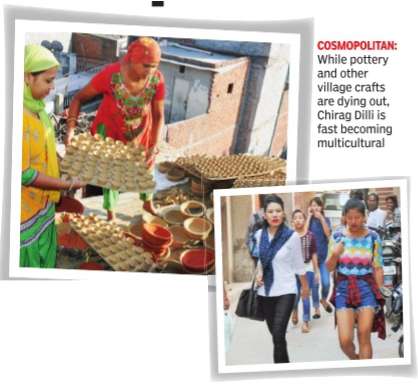
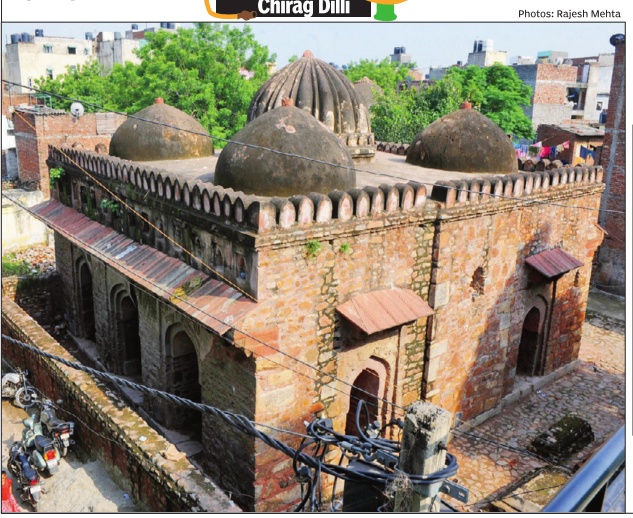
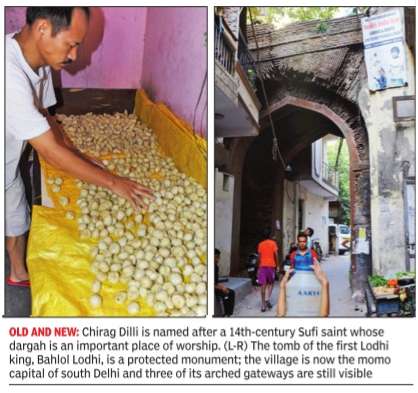
Richi Verma & Risha Chitlangia
One of the oldest villages in Delhi--it is named after the Sufi successor of HazratNizamuddinAuliya whose dargah is an important place of worship for all communities--Chirag Dilli has grown explosively over the past two decades. Its south Delhi location makes it attractive for workers on tight budgets.
While the flood of settlers has made the village a more vibrant place, old-timers worry their culture is under siege. And rapid unplanned construction has stretched the available infrastructure to breaking point.Besides the dargah of HazratNaseeruddin Mahmud Roshan Chirag Dilli, the village houses the tomb of the first Lodhi sultan, BahlolLodhi, about a dozen unprotected gumbads or domed monuments and four old gateways, one of which has been absorbed into the new buildings.
Momos
Culturally, people from the Northeast have had the most visible impact on Chirag Dilli. Thanks to them, momos are as popular as samosas among the village youth.The village is also south Delhi's momo factory, supplying to areas like Lajpat Nagar, South Extension, HauzKhas, Green Park and Malviya Nagar. But where the momo has caught on, a traditional craft like pottery is fading out.
Pottery
Only two families in KumharonkiGali still make pottery. Bimla's son, Rajinder, started learning the trade when he was five. Now 35 years old, he helps her continue the trade along with his wife. But Bimla says the returns don't justify the effort. “We earn just enough to make ends meet,“ she said. A trolley-load of clay costs Rs 10,000. “No one sees our hard work. It takes 3-4 days to make a batch of diyas and a week to complete big pots. But we get just Rs 2-3 for a diya,“ said Rajinder. Four storeys up a narrow, cracked staircase, 65-year old Bimla makes clay diyas, karwas and kulhads (earthen cups) from dawn to dusk for the festive season. She has a small kiln on her tiny, cluttered terrace in KumharonkiGali--now a potters' street in name only--and below it Chirag Dilli village spreads on all sides like a maze.
Gateways
Chirag Dilli has taken change in its stride and remains proud of its heritage. The original residents as well as the settlers know about the four gateways. “No one cares to do anything about these gateways although they are the identity of the village. Even ASI, which protects BahlolLodhi's tomb, is unable to stop encroachments around the building. All the gateways are crying for maintenance.
Bahlol Khan Lodhi's tomb
The Times of India, Aug 25 2015
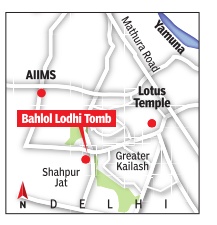
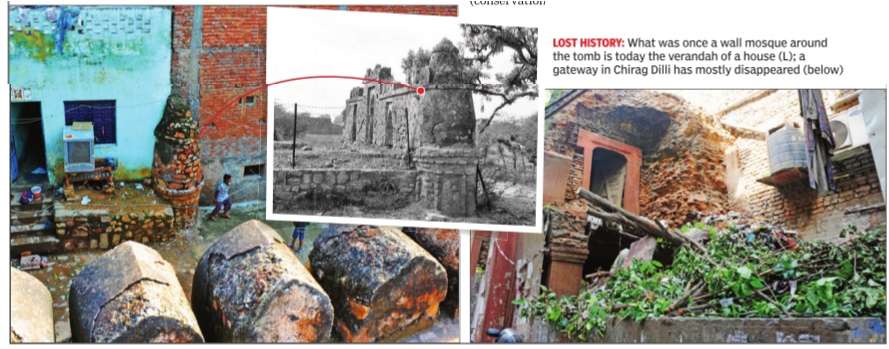
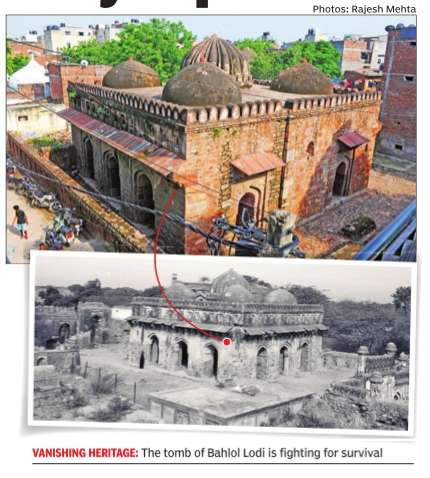
Richi Verma
A usurper Sultan's final resting place swallowed by squatters
As the founder of the Lodhi dynasty in Delhi, Bahlol Khan Lodhi left behind a lasting legacy . Yet his tomb today is in a shambles thanks to encroachments and lack of conservation efforts by authorities concerned. New buildings have come up around the monument in south Delhi's Chirag Dilli village, which itself is falling to pieces. Some portions, including a wall mosque surrounding it, vanished through the years and only the remnants are visible now. Bahlol Lodhi ruled Delhi from 1451 to 1488. History has it that he usurped the throne from the last of the Sayyid ruler. After his death, his tomb was said to have been built by his successor and son Sikander Lodhi. It used to be surrounded by a vast garden, which too has disappeared over the years.
A signage declaring Bahlol Lodhi's tomb a protected monument by Archaeological Survey of India (ASI) has failed to deter encroachers.One has to walk along a narrow lane amid multi-storey buildings to reach the monument. This is a place where residents seem to be fight ing for every inch of open space. Adjacent buildings have eaten into the monument's space with only the front part remaining protected due to the iron fencing installed by ASI. Children play on the grounds, teenagers come here for loitering around and women use the iron railing to dry their laundry.
It is unclear when the tomb last saw any conservation though patches of white plaster work can be seen at many points. Structurally, the monument is in a good state, but its overall condition is far from satisfactory with plaster peeling off from all sides and cracks developing on the façade. The five domes on the roof show decades of neglect as well. This might be the only protected monument in Chirag Dilli village. Besides, TOI could find only one gateway , which too is heavily encroached upon, among the four that existed in the same area.
In the main tomb, Quranic verses inscribed on the arches have all but vanished with the passage of time. “The quranic verses were important as these were the only ornamentation work in the whole structure,“ says an expert. ASI's director (conservation) Janhwij Sharma did not reply to TOI's queries on the conservation status of the tomb.ASI sources said constructions had come up prior to the monument being notified in the gazette. However, they said plans were afoot to start repair work.